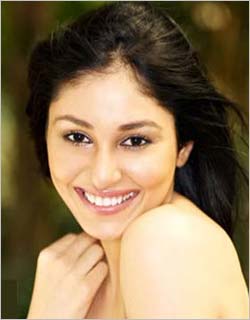 Birthday:
Birthday:
4 October 1923, Evanston, Illinois, USA
Height:
6' 3" (1.91 m)
Biography
With features chiseled in stone, who else but Charlton
Heston could you picture as Michelangelo, as Ben-Hur, as Moses?
Heston's movie career took off with The Greatest Show on Earth (1952)
and reached light speed with Ben-Hur (1959). Although he has played a
pantheon of larger-than-life roles, he usually prefers to talk about the
day-to-day daily grind of the movie business, and especially credits
the writers and directors he has worked for much of his success
Heston frequently recounted that, while growing up in northern Michigan in a sparsely populated area, he often wandered in the forest, "acting" out the characters from books he had read.
[15] Later, in high school, Heston enrolled in New Trier's drama program, playing in the silent 16 mm amateur film adaptation of
Peer Gynt, from the Ibsen play, by future film activist David Bradley released in 1941.
[16]
From the Winnetka Community Theatre (Or, the Winnetka Dramatist's Guild
as it was then known) in which he was active, he earned a drama
scholarship to Northwestern University. Several years later Heston teamed up with Bradley to produce the first sound version of William Shakespeare's
Julius Caesar, in which Heston played Mark Antony.
World War II service
In 1944, Heston enlisted in the United States Army Air Forces. He served for two years as a radio operator and aerial gunner aboard a B-25 Mitchell stationed in the Alaskan Aleutian Islands with the Eleventh Air Force. He reached the rank of Staff Sergeant. Heston married Northwestern University student Lydia Marie Clarke in the same year he joined the military. After his service and rise to fame, Heston was chosen as a narrator for highly classified military and Department of Energy instructional films, particularly relating to nuclear weapons, and "for six years Heston [held] the nation's highest security clearance" or Q clearance." The Q clearance is similar to a DoD or Defense Intelligence Agency (DIA) clearance of TS.[17]
Theater and television
After the war, Heston and Clarke lived in Hell's Kitchen,
New York City, where they worked as artists' models. Seeking a way to
make it in theater, Heston and his wife Lydia decided to manage a
playhouse in Asheville,
North Carolina, in 1947. They made $100 a week. In 1948, they returned
to New York where Heston was offered a supporting role in a Broadway
revival of Shakespeare's
Antony and Cleopatra, starring Katharine Cornell. In television, Heston played a number of roles in CBS's
Studio One, one of the most popular anthology dramas of the 1950s. Film producer Hal B. Wallis of
Casablanca spotted Heston in a 1950 television production of
Wuthering Heights
and offered him a contract. When his wife reminded Heston they had
decided to pursue theater and television, he replied, "Well, maybe just
for one film to see what it's like."
In 1995, Heston starred with Peter Graves, Mickey Rooney and Deborah Winters in the Warren Chaney docudrama
America: A Call to Greatness.
[18] In 1998, Heston had a cameo role playing himself in
The One with Joey's Dirty Day on the American television series
Friends.
Hollywood
Heston's first professional movie appearance was in
Dark City, a 1950 film noir. His breakthrough came when Cecil B. DeMille cast him as a circus manager in
The Greatest Show on Earth, which was named by the Motion Picture Academy as the best picture of 1952. In 1953, Heston was Billy Wilder's first choice to play Sefton in
Stalag 17. However, the role was given to William Holden, who won an Oscar for it. Heston became an icon for portraying Moses in the hugely successful film
The Ten Commandments
(1956), reportedly being chosen by director Cecil B. DeMille because he
thought the muscular, 6 ft 3 in, square jawed Heston bore an uncanny
resemblance to Michelangelo's statue of Moses. In 1955, he appeared with Jane Wyman in the film,
Lucy Gallant, the story of a woman determined to hold on to her dress shop in a small Texas oil-boom community. In 1958, Heston played a Mexican police officer, Ramon Miguel Vargas, in Orson Welles's widely acclaimed film noir
Touch of Evil.

Heston poses for his wife Lydia at their hilltop Beverly Hills home, just after winning an Oscar for his role in
Ben-Hur, 1960.
After Marlon Brando, Burt Lancaster and Rock Hudson
[19] turned down the title role in
Ben-Hur (1959), Heston accepted the role, winning the Academy Award for Best Actor,
one of the unprecedented eleven Oscars the film earned. After Moses and
Ben-Hur, Heston became more identified with Biblical epics than any
other actor. He voiced the role of Ben-Hur in a cartoon version of the Lew Wallace novel in 2003.
In 1965-71, Heston was the elected president of the Screen Actors Guild.
The Guild had been created in 1933 for the benefit of actors, who had
different interests than the producers and directors who controlled the Academy of Motion Pictures Arts and Sciences. Heston was more conservative than most actors, and publicly clashed with the outspoken liberal actor Ed Asner.[20]
In 1968, Heston starred in
Planet of the Apes and in 1970, he had a smaller supporting role in the sequel,
Beneath the Planet of the Apes. Also in 1970, Heston portrayed Mark Antony again in another film version of Shakespeare's
Julius Caesar. His co-stars included Jason Robards as Brutus, Richard Chamberlain as Octavius, Robert Vaughn as Casca, and English actors Richard Johnson as Cassius, John Gielgud as Caesar, and Diana Rigg as Portia. In 1971, he starred in the science fiction film,
The Omega Man.
Although critically panned, the film is now considered a classic of
post-apocalyptic horror. In 1972, Heston made his directorial debut and
starred as Mark Antony in an adaptation of the William Shakespeare play
he had performed earlier in his theater career,
Antony and Cleopatra. Hildegarde Neil was Cleopatra and English actor Eric Porter
was Enobarbus. After receiving scathing reviews, the film was never
released to theaters, and is rarely seen on television. It was finally
released on DVD in March 2011.
[21] He subsequently starred in more successful films such as
Soylent Green (1973) and
Earthquake (1974).
Beginning with playing Cardinal Richelieu in 1973's
The Three Musketeers,
Heston was seen in an increasing number of supporting roles, cameos and
live theater. From 1985 to 1987, he starred in his only prime-time
stint on a television series in the soap,
The Colbys. With his son Fraser, he produced and also starred in several TV movies, including remakes of
Treasure Island and
A Man For All Seasons. In 1992, Heston appeared on the A&E cable network in a short series of videos,
Charlton Heston Presents the Bible, reading passages from the King James Version.
Filmed in the Middle East, the series received excellent reviews,
achieving great success on video and DVD. Never taking himself too
seriously, he appeared in 1993 in a cameo role in
Wayne's World 2, in a scene where the main character Wayne Campbell (Mike Myers)
requests casting a better actor for a small roll. After the scene is
reshot with Heston, Campbell weeps in awe. That same year, Heston hosted
Saturday Night Live. He had cameos in the films
Hamlet, Tombstone and
True Lies. He starred in many theatre productions at the Los Angeles Music Center, where he appeared in
Detective Story and The Caine Mutiny Court Martial, and as Sherlock Holmes in
The Crucifer of Blood opposite Jeremy Brett as Dr. Watson.
Heston later won acclaim for a television production interpretation of
the famous detective. In 2001, Heston made a cameo appearance as an
elderly, dying chimpanzee in Tim Burton's remake of
Planet of the Apes. Heston's last film role was as the infamous Nazi doctor Josef Mengele in
My Father, Rua Alguem 5555, which had limited release (mainly to festivals) in 2003.
[22]
Heston's distinctive voice had also landed him roles as a film narrator, including
Armageddon and Disney's
Hercules.
Heston played the title role in
Mister Roberts
three times and cited it as one of his favorite roles. In the early
1990s, he tried unsuccessfully to revive and direct the show with Tom Selleck in the title role.
[23]










 Birthday:
31 May 1930, San Francisco, California, USA
Birthday:
31 May 1930, San Francisco, California, USA Birthday:
1 July 1899, Scarborough, Yorkshire, England, UK
Birthday:
1 July 1899, Scarborough, Yorkshire, England, UK




 Birthday:
28 August 1899, Figeac, Lot, France
Birthday:
28 August 1899, Figeac, Lot, France Birthday:
4 October 1923, Evanston, Illinois, USA
Birthday:
4 October 1923, Evanston, Illinois, USA


 Birthday:
18 January 1904, Horfield, Bristol, England, UK
Birthday:
18 January 1904, Horfield, Bristol, England, UK